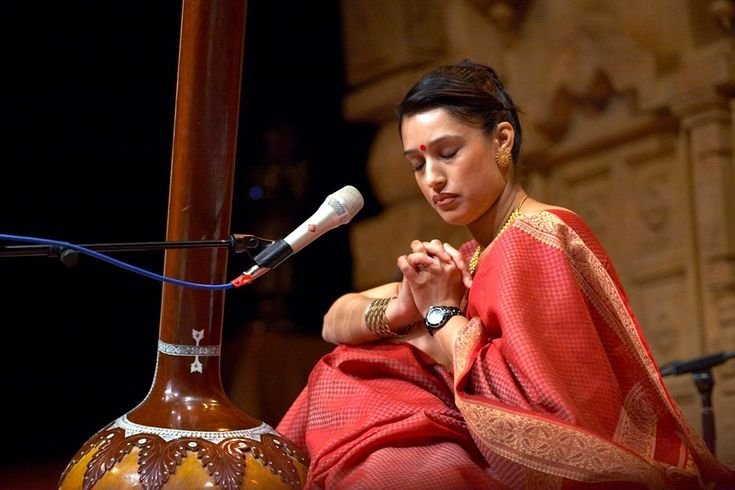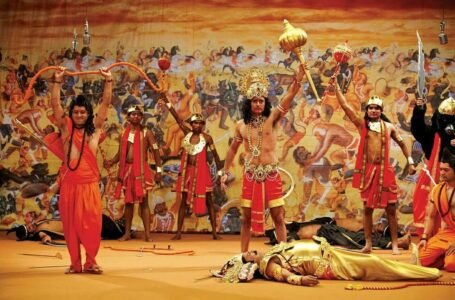Nirguni Bhajans: The Eternal Call to the Formless Divine

India’s spiritual heritage includes the Nirguni Bhajans which emerged first in Madhya Pradesh and Rajasthan regions. Devotional songs worship a god who exists without shape or attributes—the Nirgun Brahman. These bhajans discover their roots in mystical traditions and breaks through all religious limitations and caste divisions as they deliver a spiritual experience open to everyone. Rural mystic traditions actively used these bhajans as vibrant practices but their charming tones have disappeared into historical neglect. This extensive analysis evaluates the origins and essential beliefs behind Nirguni Bhajans through an in-depth look at its historical evolution together with philosophical contemplations and influential participants while studying traditional musical approaches and understanding its continued spiritual value today.
Historical Origins of Nirguni Bhajans
The Bhakti Movement (13th to 17th century) launched Nirguni Bhajans during their historical beginnings. The movement placed direct faith in God above both ceremonial practices and social rankings between castes. The Nirguni philosophy received strong support from spiritual figures who included Kabir and Ravidas and Guru Nanak because these men preached the importance of worshiping the god who has no physical shape. Through their songs composed using local languages the saints extended spiritual knowledge beyond elite groups to achieve inclusive religious practice.
The Sadhus and Fakirs in Madhya Pradesh and Rajasthan used bhajans to share songs about supreme reality during their travels from community to community such as wandering mystics. Much like the dry terrains of this region served as backgrounds to contemplative Nirguni Bhajans.
Philosophy Behind Nirguni Bhajans
Nirguni Bhajans find their philosophical source in Advaita Vedanta because this tradition reveres non-dualism as its foundation. Under this philosophy Atman functions identically with Brahman so that both identify as one. The bhajans emphasize:
Nirgun Brahman: People adore God through worshiping a deity who possesses no form and no attributes beyond temples or idols.
Universal Truth: Every person contains God according to the belief system which transcends religious categories and social frontiers.
Spiritual Awakening: Encouraging self-realization and inner contemplation as the paths to divine understanding.
Rejection of Materialism: This tradition scrutinizes how unworthwhile material things and their connections prove to be.
Nirguni Tradition worshipped powerful god heads known as Spiritual Teachers who established its fundamental aspects.
The movement of Nirguni Bhajans originally gained shape through the guidance of various important saints Their timeless compositions continue to inspire spiritual seekers:
Kabir
Kabir stands as the most honored Nirguni saint whose lyrical dohas and spiritual songs are renowned both for their profound nature and their basic poetic style. His religious compositions actively attacked formal institutional religion along with its repeating sacramental practices in order to manifest God’s presence internally.
Famous Bhajan:
Through “Jhini Jhini Bini Chadariya” the human body serves as a delicate textile structure that indicates the divine union of spirituality.
Ravidas
Through his bhajans Ravidas demonstrated devotion and criticized societal injustices while showing his tenure as a fellow contemporary of Kabir. God exists everywhere and all people have equal status according to his songs.
Famous Bhajan:
“Prabhu Ji Tum Chandan Hum Pani” – Highlighting the inseparable connection between the devotee and the divine.
Meerabai
Most people recognize Meera’s work as Sagun Bhakti yet numerous songs in her collection explore Nirguni beliefs particularly through expressions of longing for divine union.
Famous Bhajan:
Through “Mharo Prabhu Giridhar Nagar” devotion reaches a point where it becomes universal because it exceeds physical expressions.
Dadu Dayal
The bhajans from Rajasthan saint Father Dayal represent fundamental Nirguni philosophy beliefs. He preached about seeking God internally while rejecting all ceremonial rites.
Famous Bhajan:
Through the devotional classic “Moko Kahan Dhundhe Re Bande” this bhajan teaches the essential connection between God and the internal space of the seeker.
Musical Traditions and Styles
Nirguni Bhajans function as more than musical expressions because they embody deeply moving melodic soundwaves. The musical styles which accompany bhajans differ throughout India while consistently using straightforward elements that embody profound spirituality.
Instrumentation:
The traditional musical instruments of ektara tambura manjira plus dholak produce musical arrangements which create an atmosphere of rustic meditation.The small number of instruments at any performance positions the lyrics so the philosophical meaning becomes the main focus.
Singing Style:
The neglected instead uses a song arrangement which engages both leader and audience in mutual participation.Folk musical bases weave throughout the melodies using classical ragas which focus on expressive cloistered contemplation.
Performance Settings:
Traditionally Nirguni Bhajans occur at outdoor events and religious places and special festivals of Satguru Jayanti and Kabir Jayanti.When performers interact with audiences within casual settings an emotional bond quickly develops.
Decline in Popularity
These spiritually enriching musical compositions from Nirguni Bhajans have disappeared from current music tradition. Several factors contribute to their decline:
Urbanization: Rural to urban population migration disrupted how people practice their cultural traditions.
Commercialization of Music: Industrial music businesses now dominate traditional music genres to the point of eclipse.
Lack of Documentation: Many Nirguni Bhajans have existed primarily as oral transmissions through the ages which led to reductions in their complete composition library.
Changing Spiritual Practices: New religious movements along with contemporary spiritual advent have diverted public attention from conventional worship practices.
Contemporary Efforts to Preserve Nirguni Bhajans
Amidst the challenges, there are efforts to revive and preserve the tradition of Nirguni Bhajans:
Folk Festivals: The Rajasthan International Folk Festival (RIFF) together with Madhya Pradesh’s Lok Rang festival provides global audiences with access to Nirguni Bhajans performances.
Recordings and Archives: The documentation efforts of the Kabir Project together with their workshops and audio recordings and film productions have helped promote Nirguni Bhajan performances.
Modern Interpretations: The artists Kumar Gandharva alongside Prahlad Singh Tipanya and Indian Ocean bring fresh contemporary sounds to Nirguni Bhajans for modern young audiences.
Educational Initiatives: Academic institutions work to integrate Nirguni Bhajans into their curriculums because they goal to demonstrate the value of this spiritual practice to students.
Relevance in Modern Times
In a world increasingly divided by materialism and religious conflicts, the philosophy of Nirguni Bhajans holds immense relevance:
Spiritual Unity: This theology promotes both the single essence of all living beings and the universal presence of God.
Environmental Consciousness: These bhajans which lean towards simple natural themes have become crucial components for modern environmental movement aspirations.
Nirguni Bhajans and Rural Mystics
Nirguni Bhajans are devotional songs that emphasize Nirgun, a concept of the divine as formless, infinite, and beyond human comprehension. These bhajans originated in India, particularly in regions like Madhya Pradesh and Rajasthan, and were closely associated with the rural mystics who sought spirituality beyond rituals, idol worship, and organized religion.
Who are Rural Mystics?
Rural mystics are individuals from rural areas who live simple lives dedicated to spiritual exploration. These mystics often belonged to marginalized or lower socioeconomic backgrounds, detached from mainstream religious practices and orthodox rituals. They were inspired by the philosophies of saints like Kabir, Ravidas, and Dadu Dayal, who believed in a direct connection with the divine without intermediaries. These mystics were deeply introspective and sought enlightenment through meditation, self-realization, and devotion, often expressed through music and poetry.
Popularity Among Rural Mystics
Nirguni Bhajans gained popularity among rural mystics because they aligned with their philosophical outlook. The bhajans provided a medium to express their spiritual quest and devotion to Nirgun, the formless God. Unlike mainstream religious hymns tied to temple rituals or idol worship, Nirguni Bhajans were informal and could be sung anywhere—fields, homes, or village gatherings. This simplicity resonated with rural communities, where life revolved around nature and manual labor.
The content of Nirguni Bhajans often revolved around universal truths, such as the impermanence of life, the rejection of materialism, and the oneness of humanity. These themes struck a chord with rural mystics, who often felt alienated from hierarchical and ritualistic religions. The songs became a medium to question dogmas, caste barriers, and societal norms while promoting inner peace and spiritual equality.
How Did They Emphasize Nirgun?
Rural mystics emphasized the concept of Nirgun through their bhajans in various ways:
Simple Language:
The bhajans were composed in regional dialects like Malwi, Rajasthani, or Bundeli, making them accessible to the common people. The straightforward language enabled listeners to grasp complex philosophical ideas without scholarly interpretation.
Symbolism and Metaphors:
Mystics used vivid metaphors drawn from rural life to explain abstract ideas. For example, they compared the human body to a clay pot and the soul to water within it, symbolizing the union of the finite with the infinite.
Musical Expression:
Nirguni Bhajans were traditionally sung without elaborate musical instruments, relying on the earthy tones of instruments like the ektara, dholak, or kartal. The repetitive and meditative rhythms created an immersive spiritual experience.
Focus on Inner Devotion:
The bhajans emphasized self-awareness and devotion without external rituals. For instance, Kabir’s bhajans often declared that God resides within, encouraging individuals to seek divinity within their hearts rather than in temples or idols.
Questioning Rituals and Hierarchy:
The mystics criticized societal divisions and the rigidity of religious practices through their songs. They advocated for equality, love, and compassion as the true forms of devotion. Nirguni Bhajans were more than just songs; they were a spiritual movement among rural mystics, emphasizing the universality and formlessness of God. While they are rarely heard today, their legacy endures as a testament to the profound spiritual and philosophical insights that resonated with rural communities, transcending boundaries of caste, creed, and religion.
Mental Well-being: Due to their contemplative nature Nirguni Bhajans provide modern people peace during these stressful times. These musical expressions represent an eternal sacred inheritance surpassing all temporal and geographical barriers. Madhya Pradesh and Rajasthan’s mystical philosophical path gives birth to bhajans that contain India’s religious spiritual orientation. Past popularity declines aside the preservation and revival initiatives show promise for their future return. Through Nirguni Bhajan practices we return to honor an ancient tradition of worshiping the shapeless divine being by discovering sacred truths deep within ourselves.


